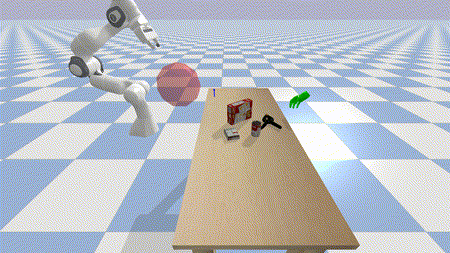Generative AI has taken the already powerful capabilities of artificial intelligence to the next level. XR design encompasses the creation of immersive experiences in phygital worlds, such as virtual reality (VR), augmented reality (AR), and mixed reality (MR). When you utilize gen AI software to build out the metaverse via XR design, you significantly enhance and accelerate the creation process.
With generative AI applications, XR designers can create interactive and adaptive content that responds to user input and environmental variables. This blog will explore generative AI’s place in the metaverse, its applications in conjunction with XR design, and how they can revolutionize how we interact with digital content.
Generative AI & The Metaverse
The term metaverse has been around since 1982, introduced in Neil Stevenson’s novel Snow Crash. In Stevenson’s metaverse, characters could escape reality and enter a new virtual world. In more recent years, the metaverse has become a reality. The virtual world is being increasingly explored and developed by tech giants like Google, Microsoft, Meta (Facebook), Amazon, and Apple. Generative AI has the potential to significantly impact the metaverse by enabling the creation of more realistic and immersive virtual environments.
With generative AI, developers can create entire worlds, characters, and even narratives that can interact with users in real time, creating a more personalized and engaging experience.
Use cases include using generative AI to create unique landscapes and environments that can respond to user input and adapt to their preferences, creating intelligent Non-Player Characters (NPCs), and creating more realistic and responsive avatars for users in the metaverse. Lastly, and probably most thought of, is creating new types of games, simulations, and other interactive experiences that are not currently possible in the physical world.
XR design plays a crucial role in shaping the metaverse and creating virtual experiences that are engaging and immersive for users.
Top 5 Applications of Gen AI in XR Design
Generative AI applications in XR design have the potential to significantly impact businesses by improving the efficiency and effectiveness of the XR design process. Below are some specific ways that generative AI is used in XR design and the potential business benefits.
Asset Content Creation
Gen AI can be used to accelerate both the pre-production and production phases of XR asset creation. This software can be used to create 2D and 3D concepts and illustrations, storyboards, or other assets used in XR applications. By training generative AI models on large datasets, designers can generate new assets quickly and easily.
One example would be using Neural Radiance Fields (NeRF) in 3D reconstruction or creating digital twins. This technology can reconstruct a 3D scene from 2D images taken at different angles. It can also generate digital twins that accurately reflect the real-world environment and provide valuable insights into how the environment functions.
Gen AI can also be used to speed up the process of 3D reconstruction by automating some of the tasks involved, such as feature recognition and object identification. This could result in more accurate reconstructions and faster turnaround times.
Automations can be set based on user-defined parameters like size, shape, and texture. With processes automated and help on the creative direction side, designers can significantly reduce the time and cost required to create their assets, making XR design more accessible to businesses of all sizes.
Live Content Generation
XR environments require a high degree of realism to provide immersive experiences for users. Generative AI can be used to create realistic textures, lighting, and other environmental factors based on real-world data. This can make XR experiences more engaging and increase user satisfaction.
By using Dall-E 2, or any other 2D generative AI, you can generate textures on runtime for 3D assets or backgrounds for the UI. Using a 3D generative AI like Point-E, you can modify the virtual world at runtime, create constraints for the user to follow the desired UX path, or even create avatars of NPCs on the fly to enable the user to interact with them.
Businesses can create more engaging and interactive XR experiences by using AI to generate live content. Additionally, AI can enable more personalized and dynamic content, leading to higher user satisfaction and better business outcomes.
Voice Communication
With advancements in natural language processing, Gen AI can enable XR devices to create more natural interactions between users and to understand and respond to the user’s speech in real-time. This means that users can interact with virtual objects or characters using their voice without needing buttons or other input devices.
If we look at a use case for NPCs, the first step in voice communication would be to generate dialogue for the NPC. This can be done using a Gen AI voice-to-text service like Meta’s Voice SDK or Azure Cognitive Services. These allow for a more realistic and natural-sounding voice for virtual assistants, chatbots, or other interactive voice-enabled XR applications. This helps to improve the overall gameplay experience by providing a more natural and intuitive way to communicate.
Synthetic Data Generation
According to Gartner, 60% of the data required to create AI and analytics projects will be generated synthetically by 2024.
Generative AI applications can be used to create synthetic data for XR that can create faster and more cost-effect designs. The synthetic data created can be more realistic and diverse than traditional methods. In turn, businesses could get products to market faster because their design time can be reduced, reducing production costs.
In addition, the software can be used to improve the quality of training data and generate quality synthetic data at scale. Generative AI algorithms can be used to augment existing training data by generating additional synthetic data that can be used to train XR models. This helps to increase the data’s diversity and quantity, improving the training data’s quality and the model’s accuracy.
Users can create virtual environments, objects, and characters for AR/VR applications by generating synthetic data for training machine learning models. Example use cases include using machine learning models trained to recognize hand gestures, facial expressions, and other common movements in AR/VR applications. Other examples include training a robot arm to pick up pieces or objects and training computer vision AI using synthetic data of specific types of objects.
Conclusion
The potential impact of generative AI on the metaverse is vast and exciting, from creating immersive virtual environments and intelligent NPCs to more realistic avatars and new types of interactive user experiences. Generative AI has the potential to transform the way we interact with the digital world and with each other.
Using generative AI applications in XR design can help businesses create more immersive and engaging XR experiences while reducing the time and cost required to do so. By adopting these technologies, companies can gain a competitive edge in the XR market and provide more value to their customers.
Researching Generative AI and deciding which software is right for your company can be time-consuming, and hiring an in-house team is not ideal, especially if you’re still exploring who you need and what for. To keep up with your competition, consider working with a nearshore digital product development partner with experience implementing Generative AI solutions and building new virtual worlds with XR design.
To learn more about how Wizeline delivers customized, scalable data platforms and AI tools, download our guide to AI technologies or connect with us today at consulting@wizeline.com to start the conversation.









